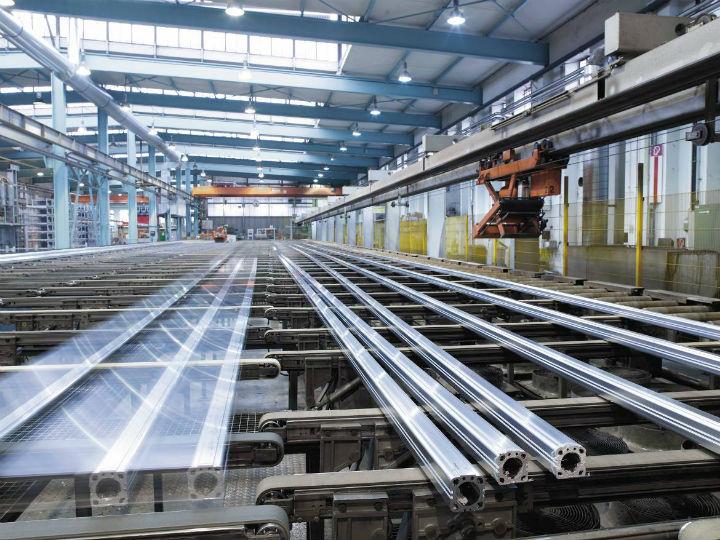by Renee Van Heusden, Morrison Harry and Mary Puleo*
With the fifth anniversary of the Paris Climate Agreement this December and the COP26 Race to Zero dialogues throughout November in preparation for the meeting in 2021, climate change remains high on the agenda despite the ongoing challenges COVID-19 presents. This continued sense of urgency has triggered a response across many industries. The aluminium sector must accelerate action to meet global decarbonisation goals.
Heavy industries, which together emit more than 10 gigatonnes of greenhouse gas (GHG) emissions, must be decarbonised to meet the goals of the Paris Agreement.
The aluminium sector has a pivotal role to play here. Accounting for 1.1 billion tonnes of CO2 emissions per year, it generates around 2% of global human-caused emissions. Demand for aluminium, an essential material for several key industries including construction, transportation and power transmission, is expected to grow by more than 50% by 2050. As such, emissions must be addressed now.
Spotlight on major aluminium-producing regions
2020 appears to mark a turning point for three key aluminium-producing regions: China, the US and the EU.
One of the most significant climate commitments made in 2020 is China’s target to reach peak emissions by 2030 and net-zero by 2060. It is a bold ambition set by the nation that has the largest carbon footprint on the planet, and it has the potential to transform the way the sector — and the world — is addressing the climate crisis.
Aluminium production in China is a major driver of sectoral GHG emissions due to Chinese producers’ high reliance on captive coal-fired power plants; coal-powered electricity used during primary smelting accounted for around 58% of the sectoral carbon footprint in 2019.
As global demand for aluminium increases over the next 30 years, it is anticipated that it will be met primarily by China and Southeast Asia. There is an urgent need to decarbonise the electricity power supply used by aluminium producers through renewables and carbon capture, utilisation and storage (CCUS).
With China’s recent commitment to reach carbon neutrality by 2060, it seems promising that momentum to decarbonise is building in high-emitting countries.
Hopes hinge on Joe Biden in the US
The election of Joe Biden as US president-elect in November 2020 will likely lead the country to take more decisive action to combat climate change. Biden has stated his intention to rejoin the Paris Agreement and position the US to become a global leader in the fight against climate change.
He has spoken publicly about his goals to decarbonise the US energy grid by 2035 and reach net-zero by 2050. While Biden’s ability to implement these changes will depend on policy approval from Congress, the US — as the largest per-capita emitter and one of the largest economies in the world — has a strong ability to influence international decarbonisation efforts.
Increased consumption in the electric vehicle (EV) industry and expansion of solar photovoltaics (PV) will significantly increase demand for aluminium, while the industry must decarbonise in parallel.
If President-Elect Biden passes legislation to encourage decarbonisation across the US, aluminium producers may face competitive pressures based on the carbon footprint of their products.
Europe continues to strategise
Europe continues to set ambitious decarbonisation goals. January 2020 saw the introduction of the European Green Deal, a strategy and action plan to help the EU reach net-zero by 2050. It outlines the need to take a holistic and inclusive approach to transition to a green economy and extends beyond the need for decarbonisation to consider biodiversity, food security and waste reduction.
Specific policies will be developed by member states, but it is likely that in the coming years increasingly bold targets will drive new policies such as border carbon adjustments, annual mandatory carbon reductions or incentivising investment in low-carbon technology.
While many aluminium players in Europe already face stringent regulations, as a major importing region, the expansion of policy that impacts imported products will determine external players’ level of participation in the European market.
A path forward
With recent commitments from some of the aluminium industry’s key regions, international collaboration is more important than ever. Partnerships at multiple levels – between countries and sectors, and within sectors – are needed to address a systemic challenge the scale of the global climate crisis.
Part of the problem is that alongside the rising demand for aluminium is a growing consensus about the need to decarbonise. The aluminium sector faces several challenges therefore, perhaps most notably the high reliance on fossil fuel-based electricity.
At this point, there is no evidence that GHG emissions have peaked and begun to decline. With every year the peak is delayed, more rapid action will be required to meet international targets. As a significant emitter, the aluminium sector needs to present an industry action plan towards its pathway to decarbonisation. Now is the time to focus on finding solutions so it can play its part in reaching the climate ambitions set by society.
In the recently published report ‘Aluminium for Climate: Exploring Pathways to Decarbonise the Aluminium Industry’, the Forum and Accenture detail possible pathways for the aluminium sector to accelerate its efforts to decarbonise. Leaders in the aluminium industry must engage in the conversation around decarbonisation, to set ambitious targets and to work together on a path to reach net-zero by 2050.
*Project Lead Mission Possible Steel and Aluminium , World Economic Forum and Managing Director, Accenture Strategy, Accenture and Management Consultant, Accenture
**first published in: www.weforum.org




 By: N. Peter Kramer
By: N. Peter Kramer
